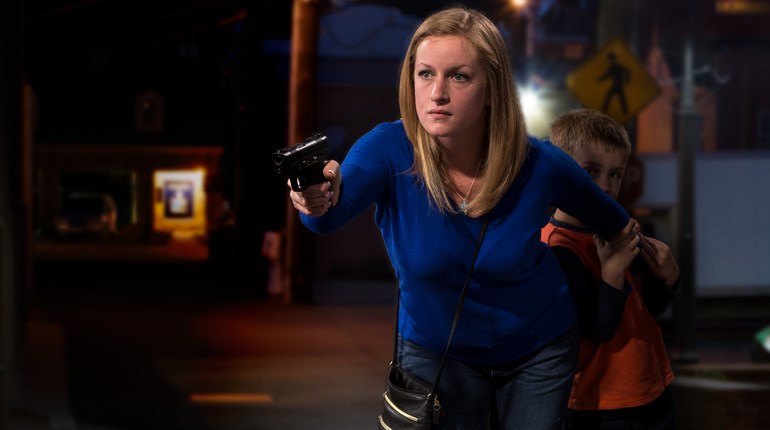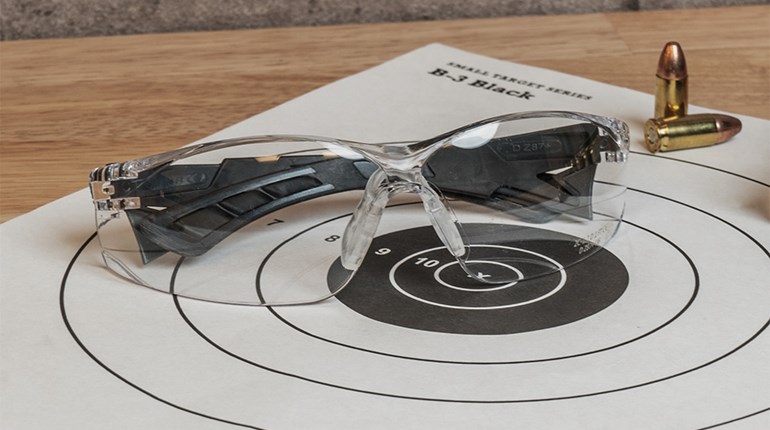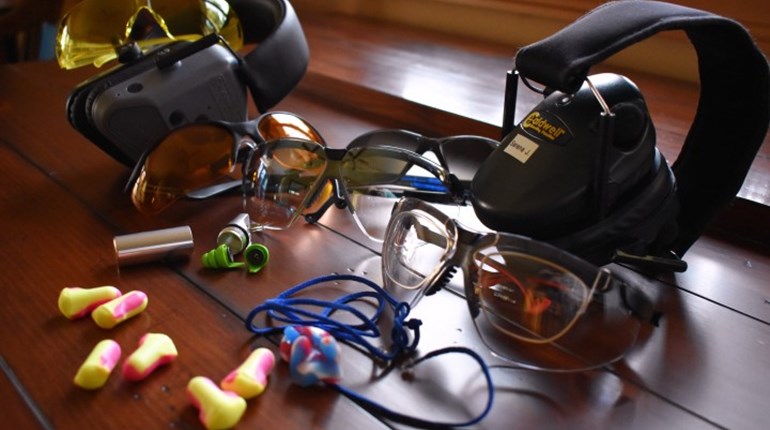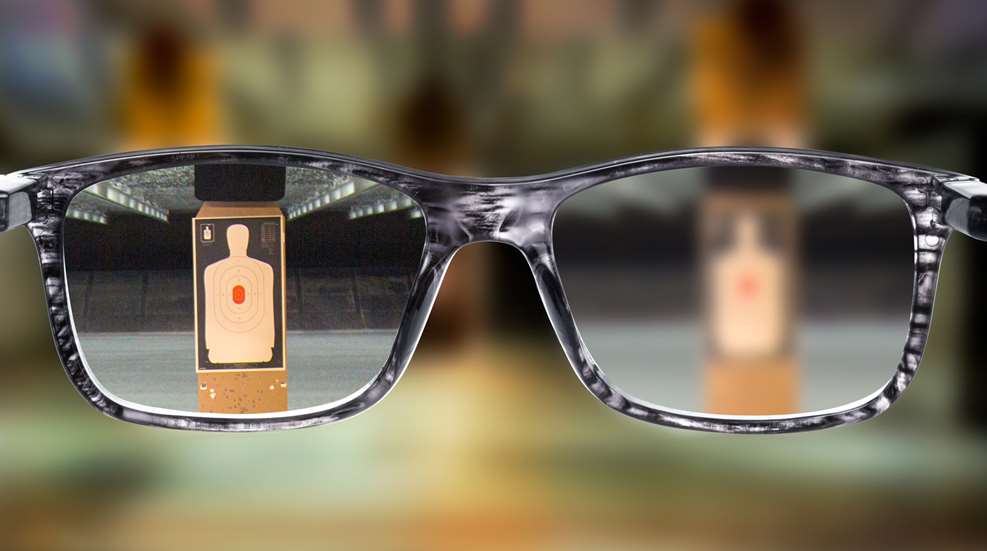
I have reached the halfway point of this thing called life, and it has been a grand ride indeed. I think of myself as a high-mileage athlete. I have lived a lifestyle of pushing myself hard for as long as I can remember. Health and fitness are important subjects to me, and I continue to learn all I can in an effort to live a rewarding life to the very end. Along the way, I am having to learn new ways to enjoy my passions. Aging is an irreversible process, but it doesn’t mean you shouldn’t fight it tooth and nail. There is no easy path; you will have to work harder in some cases as you get older. I have learned my eyesight is a limiting factor when it comes to shooting. Over the years, I have broken it down into three categories: shooting with corrective lenses, shooting without corrective lens and technology to help improve the visual acuity of the sight system.
I was first prescribed glasses in my teenage years. I don’t recall how bad my eyesight was, but it was obviously correctable with my new glasses. The only problem was my active lifestyle didn’t always mate up with wearing them. I played water polo and swam in high school, so wearing them really wasn’t an option as it is in other sports and activities. I learned to cope with my eyesight and it never seemed to slow me down. What I discovered early on were simple strategies that helped me see whatever I needed to see. It wasn’t until my Naval career in the SEAL Teams that I was selected for contact lenses. In the performance of my duties, it could be difficult to count on contact lenses, much less glasses, so I was leery of the new technology. While not new per se, it was new to me.
My shooting and other activities that required good vision were not affected too badly—or so I thought. As soon as I started wearing glasses on a regular basis, I did see much better. I look back at my shooting performance and realize it was being limited by what I could see. My vision at distance was slowly deteriorating. My ability to see my front sight or reticle was not an issue, so the worsening vision was not really on my radar. I also wasn’t looking quite as intently at my front sight because I was having such a difficult time seeing at distance; an unintended consequence of my vision issues that actually produced a pretty reliable technique.
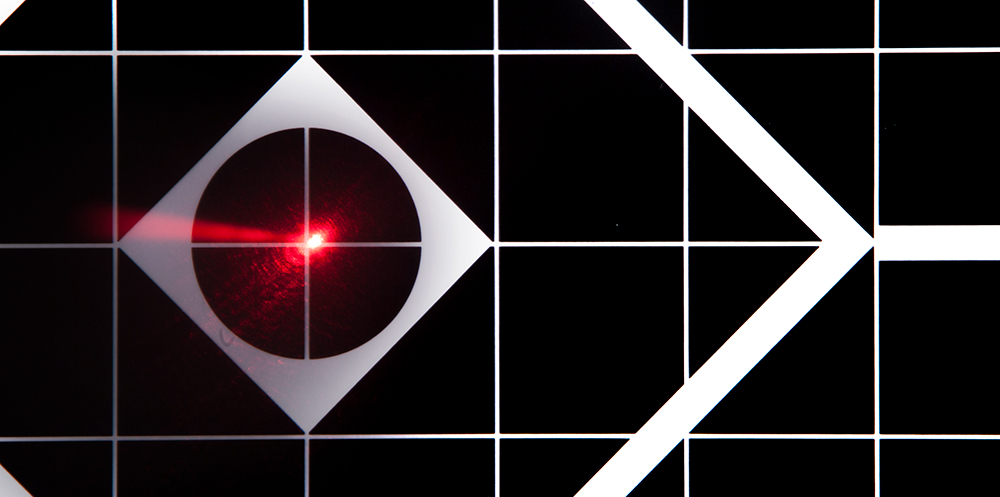
I learned early on the difference between a hard and soft front-sight focus. This was the beginning of my understanding of time, distance and exposure, or TDE. There were some instances due to the distance and exposure I didn’t need to see my front sight as vividly as other times. There might have been a little bit of laziness on my part, but as speed became a priority, my hard focus drifted more toward a soft focus on my front sight. While the human eye cannot focus on more than one distance at a time, I was seeing my front sight vaguely and seeing my target a little blurrily.
When I started shooting with corrective lenses, it helped me see my target more clearly. I was able to see much more of my environment. I will admit it was really nice to make out more details of my surroundings, and that was obviously important in my line of work. It came back down to a balancing act. I was willing to trade seeing my front sight vividly for seeing my environment clearly. With more and more training experience under my belt, I came to appreciate this accommodation.
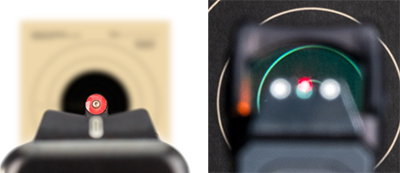
What is soft focus versus hard focus as it relates to your sight system? In general terms, it means I only perceive my front sight’s position in relationship to the rear sight. I can see the front sight, but the sharp contrast of the edges is a bit fuzzy. While the edges are fuzzy, in truth the whole front sight is not really in focus. I notice the edges the most since they are what I use to define proper sight alignment. As I extend my firearm to the target, I’m looking at the target. I need to locate—then identify—the target, first and foremost. Once a target has been identified, I need to move the firearm from point of carry to the target. Next is the confirmation of my sights. I need to move my focus from the target to my sight system. Are my sights aligned enough for the shot required? (Remember the TDE I discussed earlier?) If so, then I don’t waste time trying to perfect the sight alignment. Instead, I accept a degree of imperfection. Shooting with my corrective lenses, whether contacts or glasses, taught me to be OK with a degree of fuzziness.
Of course, I did not accept this at first. I worked with my eye doctor to try and achieve the perfect prescription: One that would enable me to see both my front sight and target with reasonable clarity. There was a short time period where they aligned together, but as my eyes aged it became more and more difficult to find balance. It was at this point I started doing more work without my corrective lenses. At first, it was as a contingency against my worst-case scenario: What if I’m awoken in the middle of the night and must respond to a critical situation? Time is of the essence, so if I have to choose between trying to find my glasses and trying to retrieve my firearm, I will choose my firearm. While my vision has remained adequate for the essential ability of target identification, what I eventually discovered is my accuracy was less precise. I was able to hit the target, just not with as tight a shot group as with my correct lenses. To be honest, I was a little shocked at the positive outcome. Working on a soft focus earlier in life seems to have paid off.
With my eyesight less than perfect, I have grown accustomed to not seeing my sights with a hard focus. There were plenty of times when I did not wear my corrective lenses for one reason or another. A frequent one was wearing eye protection. I didn’t always wear contact lens. The early versions were less-than-comfortable and required a lot more maintenance than the throw-away, daily-use versions we have today. The moment I put my eye protection on, I was back to seeing my sights pretty well, but my environment less than ideally. There are plenty of times this might be something you practice.
Wearing glasses, while convenient, also can be less secure. Should you find yourself being attacked by an assailant, it is quite possible your glasses can get knocked off. Therefore, it is always good to develop a little familiarity with how your sights might look without them. At first, there is a little bit of a learning curve. The novelty of not seeing as clearly can sometimes cause a bit of delay. If you are one of those who need corrective lenses but find yourself without them, you get a front sight that is fuzzier and fuzzier. Thus, it helps to learn how to adapt to the new sight picture you may be confronted with.
That is one reason wearing contacts is a better alternative if you find the right combination of comfort and wearability. However, even if you wear contacts, you probably do not wear them all the time. Nighttime or during periods where you may be ill are common scenarios. Most eye-care professionals will discourage you from wearing contact lens to bed or overnight. I was told it is important to allow my eyes to breathe and get oxygen in order to keep them healthy. Then, during the allergy season, it becomes almost unbearable for me to wear them daily. So, what happens if you are called to protect yourself or your loved ones with your firearm in these moments? You might find yourself in a situation where you do not have the time to put in your contacts or put on your glasses. It is late at night and you hear a crash or the sound of danger in your home. No time to delay; you must act fast.
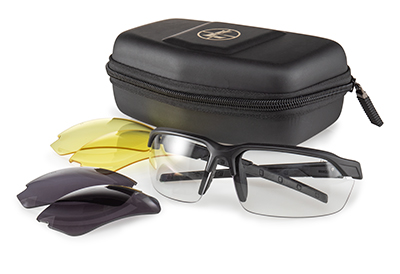
There is a lot of technology that can help you see your sights better. High-contrast sights or high-definition sights were my savior. I had the added complexity of needing sights I could see at indoor ranges under artificial lights. I tried many different types and, in truth, they each offered me a small advantage in one area, but a disadvantage in another. After much experimentation, I eventually settled for my favorite iron sights: the SIG Sauer XRay sights. These highly contrasting sights did one thing for me other sights didn’t. They allowed me to center the green “blob” on the target for point-of-aim, point-of-impact intersection. Very few iron sights use the middle of the dot embedded in the front sight. This is typically referenced as a combat sight picture and goes back to the 1960s. When all three dots are aligned, the point-of-impact is in the center of the middle dot; which is the front sight. I will admit it took me some time to learn this new sight system, but I immediately came to appreciate the value it brought to my shooting needs.
Newer options include the micro red-dot sights (MRDS); which project an illuminated dot onto a lens. They’re not to be confused with lasers, which emit a visible or infrared dot on the target. These MRDS offer a shooter with aging eyes a great alternative. Visible at all times, the shooter can see a red blob pretty much regardless of lighting conditions. I have found the lower the light level, the harder it is to see my sights. Similar to the artificial lighting of indoor ranges, it is very difficult to pick up my sights when lighting conditions change. While an MRDS may seem like the easiest solution, I typically discourage new shooters from the investment at first. I find it far better to invest the finances into training and ammunition, since most issues seeing the front sight are correctable with a decent prescription. On top of that, there is a learning curve many shooters new to MRDS will experience that can take a while to sort out. In addition, there is the maintenance or upkeep issue involved in owning and using one. I first started using them back in early 2007 on pistols and, while I love them, I now balance their liabilities with their assets, which means I generally use them only on my home defense-firearm or my duty firearm. My carry firearms all still use iron sights.
In the end, we are all aging; some faster than others and some with more complications. I embrace the new challenges and try to find work-arounds to share with my students and those in need. Working with your eye-care professional to get the most out of your prescription and then getting comfortable with the new acuity or embracing a new technology may be your first step. From a practical point of view, it is possible we may not have our corrective lenses—or they get knocked off during the fray. Being able to manage without corrective lenses to see enough of your sights is well worth your time.












